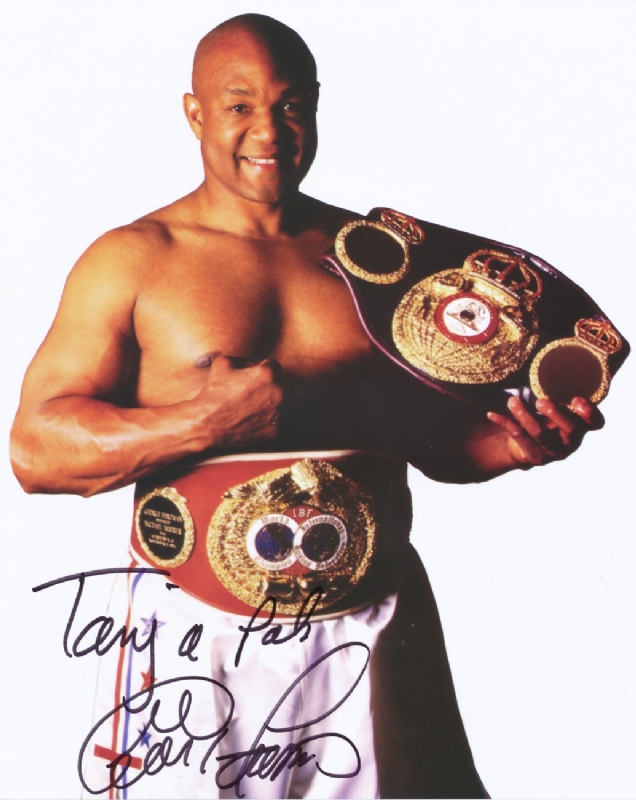George Foreman is a name synonymous with power, resilience, and an extraordinary journey both inside and outside the boxing ring. Known for his towering presence and formidable strength, Foreman's career has left an indelible mark on the sport of boxing. While many fans know him as a charismatic personality and entrepreneur, his physical attributes often come under scrutiny. Understanding his height and weight adds another layer to appreciating his achievements in the ring.
Foreman’s story extends beyond just his boxing prowess; it encompasses his transformation from a heavyweight champion to a global icon. His unique combination of size and agility made him one of the most feared fighters of his era. However, the specifics of his height and weight have been topics of interest among boxing enthusiasts. This article delves into these surprising facts about George Foreman, shedding light on how his physical dimensions contributed to his legendary status.
The Heavyweights: A Historical Perspective
In the annals of boxing history, few names resonate as strongly as George Foreman when discussing heavyweight champions. Among the 10 heaviest heavyweight champions ever, Foreman stands out not only for his sheer size but also for his ability to maintain peak performance despite fluctuating weights throughout his career. In 1987, during his bout against Steve Zouski, Foreman tipped the scales at a career-high 267 pounds, showcasing his imposing stature even in later years.
This remarkable weight gain was part of a broader trend in modern heavyweight boxing, where athletes like Tyson Fury and Anthony Joshua have pushed the boundaries of what constitutes a traditional heavyweight fighter. Foreman's journey through various weight classes highlights the evolution of boxing strategies and training methods over time.
Despite his significant weight, Foreman remained a dominant force in the ring, proving that size alone does not define success. His ability to adapt and thrive under different conditions underscores his legacy as one of boxing's greatest competitors.
A Lighter Side: Foreman vs. Qawi
One of the more intriguing aspects of George Foreman's career was his ability to adjust his weight according to specific matchups. For instance, in his fight against Dwight Muhammad Qawi in the late 1980s, Foreman managed to cut down to an impressive 235 pounds. This marked one of the lighter weights he achieved during his comeback phase, demonstrating his commitment to maintaining optimal condition for each bout.
Qawi, a former cruiserweight and light heavyweight champion, posed a unique challenge due to his technical skills and speed. By reducing his weight, Foreman aimed to enhance his mobility and agility, countering Qawi's strengths with strategic adjustments. This decision paid off, as Foreman showcased his versatility and tactical acumen in the ring.
The significance of this match lies in Foreman's willingness to experiment with his physique, highlighting his adaptability as a fighter. It serves as a testament to his enduring competitiveness and desire to remain relevant in an ever-evolving sport.
Power Beyond Size: The Science Behind Foreman's Punch
While George Foreman's weight and height were certainly factors contributing to his punching power, they were far from the sole reasons behind his devastating blows. At their primes, both Foreman and Mike Tyson stood at approximately 6'3 with similar arm lengths and weights around 220 pounds. Yet, Foreman's punches carried an unmatched ferocity that left opponents reeling.
Experts attribute this phenomenon to Foreman's exceptional technique, timing, and leverage. Unlike many heavyweights who rely solely on brute force, Foreman utilized his entire body to generate power, transferring energy efficiently from his legs through his core and into his fists. This biomechanical efficiency allowed him to deliver knockout blows consistently.
Beyond physical attributes, Foreman's mental toughness and psychological dominance played crucial roles in amplifying his effectiveness in the ring. His reputation as a relentless attacker often intimidated opponents before the first bell even rang, further enhancing his impact.
A Legacy Beyond Boxing: The Man Behind the Myth
Encyclopedia Britannica immortalizes George Foreman as a two-time world heavyweight champion whose accomplishments extend well beyond the confines of the boxing ring. Born in 1949, Foreman carved out a storied career characterized by triumphs, setbacks, and ultimately, redemption. His second reign as heavyweight champion at age 45 remains one of the most inspirational stories in sports history.
Outside of boxing, Foreman became a beloved figure thanks to his entrepreneurial ventures, particularly the iconic George Foreman Grill. His rags-to-riches narrative resonated deeply with audiences worldwide, cementing his place as a cultural icon. Despite passing away in 2025, his influence continues to inspire generations of athletes and entrepreneurs alike.
Foreman's life exemplifies perseverance and reinvention, reminding us all that true greatness stems from character and determination rather than mere physical attributes.
Recreating the Legend: Khris Davis as George Foreman
In the pursuit of authenticity, actor Khris Davis embarked on a transformative journey to portray George Foreman in the biopic Big George Foreman. To accurately capture Foreman's early boxing years, Davis bulked up to an impressive 220 pounds, replicating the champion's youthful vigor and athleticism. This meticulous attention to detail ensured that audiences experienced the full magnitude of Foreman's charisma and physicality.
However, the production encountered delays as Davis needed additional time to achieve the necessary weight gain for portraying Foreman during his later years. This delay underscored the importance of precision in bringing such a legendary figure to life on screen. Ultimately, Davis succeeded in delivering a compelling portrayal that honored Foreman's legacy.
The film serves as a tribute to Foreman's remarkable journey, emphasizing the challenges he faced and overcame throughout his illustrious career. Through Davis's performance, viewers gain insight into the complexities of a man whose life transcended the boundaries of professional boxing.

